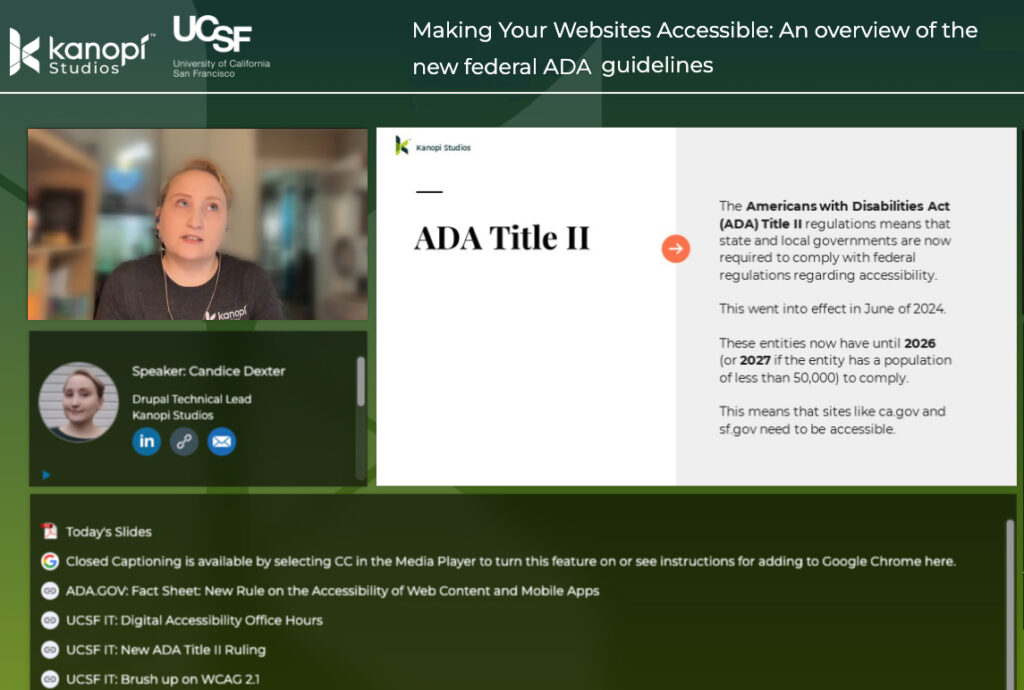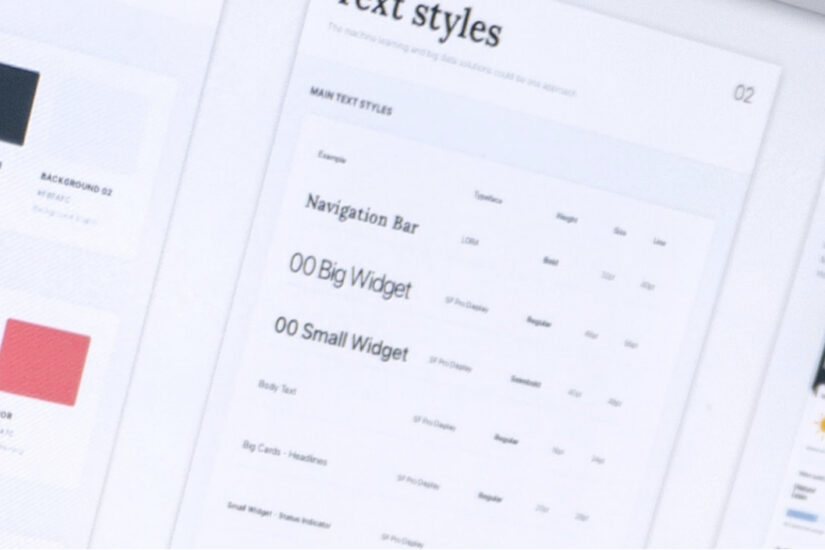In an era where digital inclusivity is becoming increasingly critical, the new ADA (Americans with Disabilities Act) guidelines for web accessibility aim to help create a more equitable online experience.
For those of us responsible for maintaining websites, this will require an ongoing commitment to ensuring your site is navigable, readable, and compatible with diverse technologies at all times.
Who specifically has to follow these web and mobile app accessibility requirements? While everyone certainly should, this particular set of guidelines are targeted to the following:
- Public transit agencies
- State and local government offices that provide benefits and/or social services, like food assistance, health insurance, or employment services
- Public schools, community colleges, and public universities
- State and local police departments
- State and local courts
- State and local elections offices
- Public hospitals and public healthcare clinics
- Public parks and recreation programs
- Public libraries
Site owners have been tasked with achieving and maintaining WCAG 2.1 AA compliance by April 24, 2026. Adopting these standards not only fulfills your organization’s legal obligations, but will also enhance user experience and foster a more inclusive digital environment.
But first, a brief history.
Timeline:
- In 1990, the Americans with Disabilities Act (ADA) was signed into law as a landmark civil rights measure aimed at preventing discrimination based on disability. This legislation mandates reasonable accommodation requests by employees and establishes accessibility requirements for public spaces, such as wheelchair ramps.
- In 1998, Section 508 was added to the Rehabilitation Act of 1973, requiring that all federal agency information technologies — including websites — be accessible to both employees and the public.
- Additionally, under Title II of the ADA, state and local governments are now required to adhere to federal accessibility regulations that went into effect as of June 2024.
- Government entities have until 2026 to achieve compliance; however, those serving populations of less than 50,000 have until 2027.
- Consequently, websites with a .gov domain are now expected to meet these accessibility standards.
The four principles:
At the heart of these guidelines — as well as providing the technical standards for compliance — are the Web Content Accessibility Guidelines (WCAG) 2.1 Level AA. These guidelines outline four fundamental principles to ensure that web content is accessible to everyone:
- Perceivable: Can the content be seen and read?
- Operable: Can the content be navigated? Think keyboard accessibility.
- Understandable: Is the content organized?
- Robust: Is the content compatible with technology? Screen readers, for example.
Otherwise known simply as P.O.U.R.
What does this mean for web maintenance?
To effectively navigate the new guidelines and ensure your website remains inclusive and compliant, it will be important to focus on the following key areas:
1. Accessibility Standards: Ensuring your website content meets the P.O.U.R. principles described above.
2. Regular Accessibility Audits: Audits will need to be performed on a regular basis to identify and fix issues. This might include using automated tools and manual testing to ensure ongoing compliance.
3. Inclusive Design: Updates to your site should be designed with accessibility in mind from the start. This means incorporating features like alt text for images, proper keyboard navigation, and accessible forms. (We’ve posted extensively about this subject; please check out the links below.)
4. Legal Compliance: Non-compliance with ADA guidelines can lead to legal challenges and potential lawsuits. Ensuring that your website meets the latest guidelines helps mitigate legal risks.
5. Training and Awareness: Web development and maintenance teams should be trained on accessibility best practices to ensure that new content and features adhere to these standards.
6. User Feedback: Incorporating feedback from users with disabilities can help identify and address accessibility issues that might not be caught through automated testing alone. As with user testing in general, when done correctly it is definitely the added time investment.
We love web accessibility.
We take web accessibility seriously at Kanopi. It’s a key part of being an inclusive organization, which is one of our core values. We’ve built accessibility practices into every step of our process, including research, discovery, content auditing, and persona reviews. Several of our team members are IAAP certified experts who frequently write articles and give presentations about website accessibility and inclusion. In fact, here are a few related blog posts our team has written:
- Web Accessibility 101
- How to test your website for accessibility
- Accessibility overlays: buyer beware
- Patient-first design for healthcare (includes a section on how we design for accessibility)
- Alt Text and Captions and Titles, Oh My!
- Web Accessibility Mistakes: the Good, the Bad, and the Ugly
It’s also worth mentioning that every site we build and support is AA WCAG compliant or better. So if you need help ensuring your organization’s website meets the new guidelines, please reach out to us! Working in collaboration with your internal teams, we’ll help you align your brand with modern web accessibility best practices.
A more inclusive web is a better web.
The new ADA guidelines underscore the need for a proactive approach to web accessibility. As digital spaces become central to everyday life, embracing these standards not only ensures legal compliance but also enriches every user’s experience and promotes inclusivity. By integrating accessibility into the core of your web maintenance strategy — through regular audits, inclusive design, and responsive user feedback — you contribute to a more equitable digital world.
Want more? We held a webinar about it
Want to dig deeper into the guidelines? Kanopi’s Candice Dexter gave a webinar for our client the University of California San Francisco called “Making Your Websites Accessible: An Overview of the New Federal ADA Guidelines.” (30 minutes)










